How to Stress Test a WordPress Website in 2025 (Step by Step)
Want to stress test a WordPress website and see how it performs under high traffic situations? Learn how to conduct stress tests and improve site performance.
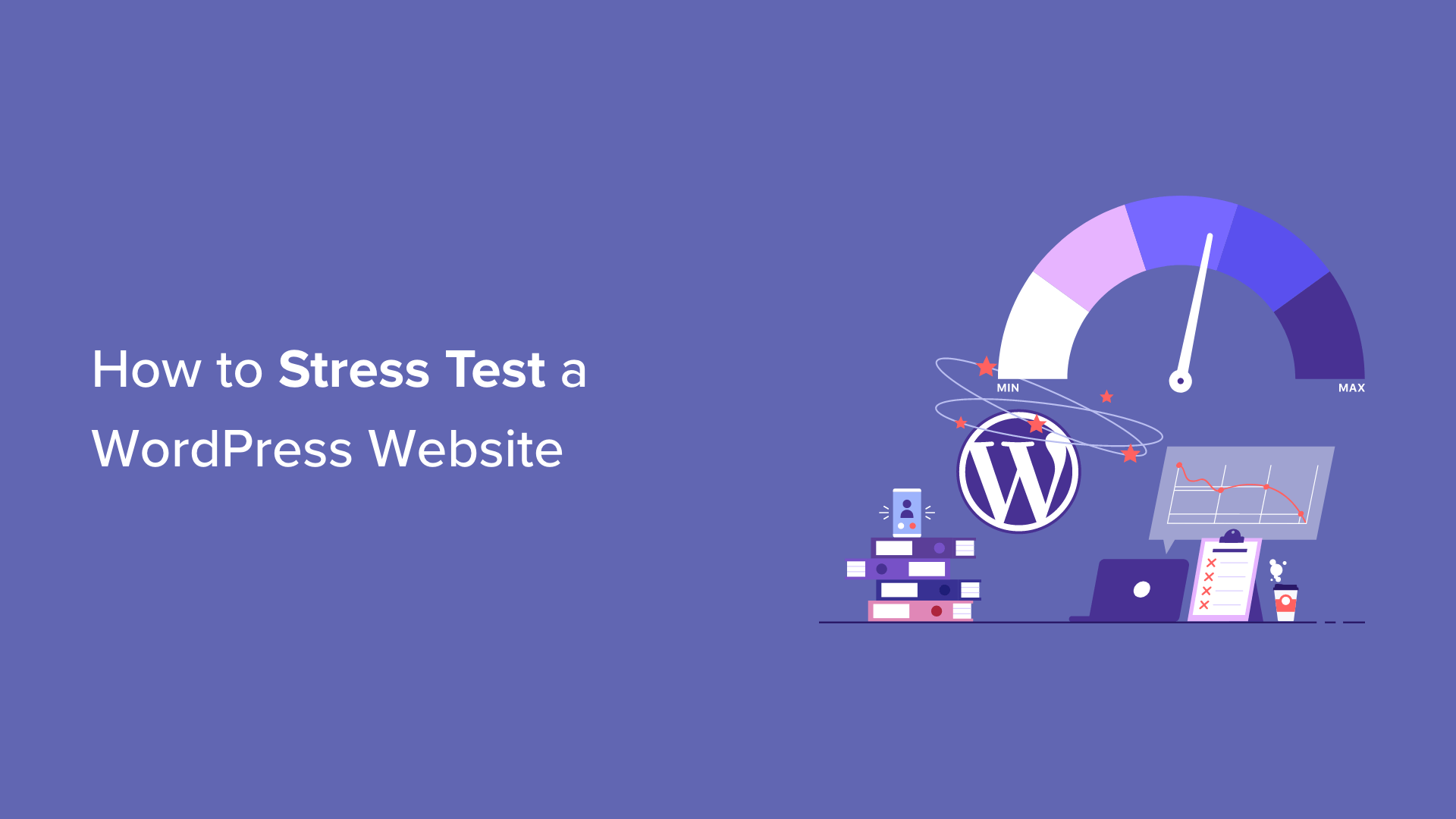
We believe every site owner should know how to stress test a WordPress website. It’s one of the most helpful things you can do for your online presence.
This test is about building confidence in your site’s ability to handle success.
Knowing your site’s capacity helps you plan for the future. You can confidently promote your business knowing your site is solid and dependable.
The process is much more straightforward than it sounds. Our approach is designed to give you clear answers without any technical problems. We’ll walk you through each stage, making sure you feel in control and ready for anything.
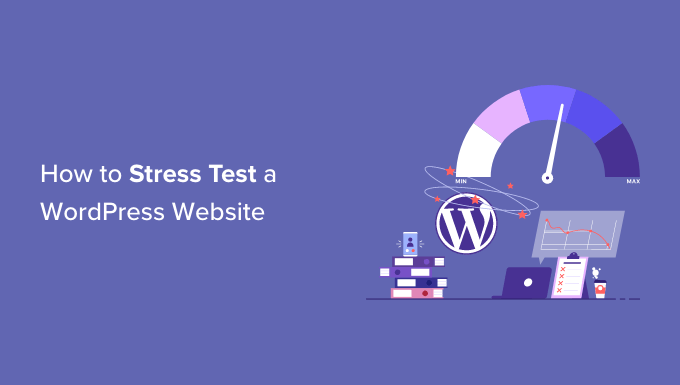
Expert Tip: Prefer to leave it to the experts? Our team at WPBeginner Pro Speed Optimization Services can handle everything from a full performance audit to optimizing your WordPress website for SEO and user experience.
What Is a WordPress Stress Test?
A WordPress stress test lets you see how your website will perform in high-traffic situations. It helps you prepare for spikes in traffic and see how your site handles the load.
Usually, the amount of traffic a website can withstand is determined by your WordPress hosting plan. However, stress testing helps find these limits and uncovers issues that might occur due to high traffic.
For instance, a sudden spike in traffic can cause your site to crash and utilize all the server resources. Similarly, you can also see which WordPress plugins, themes, code snippets, and images will malfunction in extreme conditions.
With stress testing, you can easily fix any issues or correct a setting that might be misconfigured. As a result, you’ll offer a better user experience and be prepared for high-traffic situations.
That said, let’s see how to stress test a WordPress website.
Stress Testing a WordPress Website
When it comes to measuring the performance of your WordPress website, you’ll find lots of speed test tools, like PageSpeed Insights, Pingdom, or GTmetrix.
While these tools help find out how fast your site loads, they don’t tell you how a website will perform under high traffic.
To stress a WordPress site, we will be using Loader.io for this tutorial. It is a free tool that simulates high-traffic situations and performs a series of tests.
Sign Up for a Free Loader.io Account
First, you’ll need to visit the Loader.io website and create a free account. Simply click the ‘Sign Up Now’ button to get started.
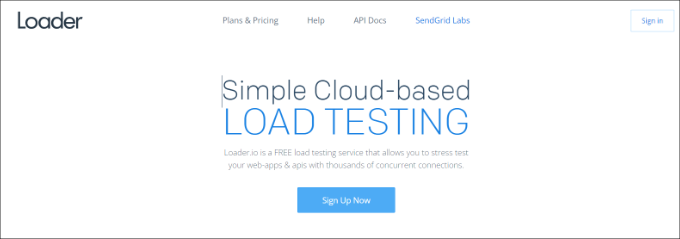
After that, you will see different pricing plans offered by the tool.
Go ahead and select the ‘Free’ pricing plan.
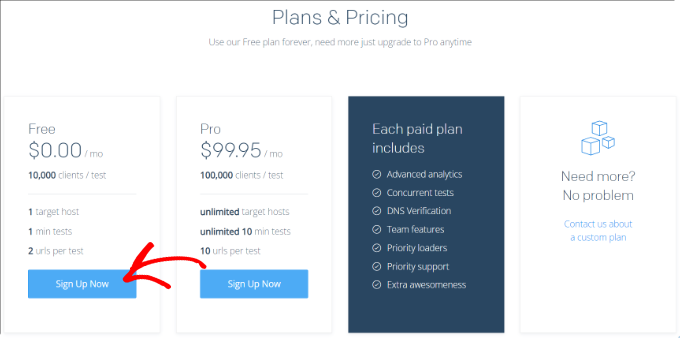
Next, you can enter details to sign up for a new account.
Loader.io will ask for a company name, email address, and password. Once you’ve added these details, simply check the reCaptcha box and click the ‘Sign Up’ button.
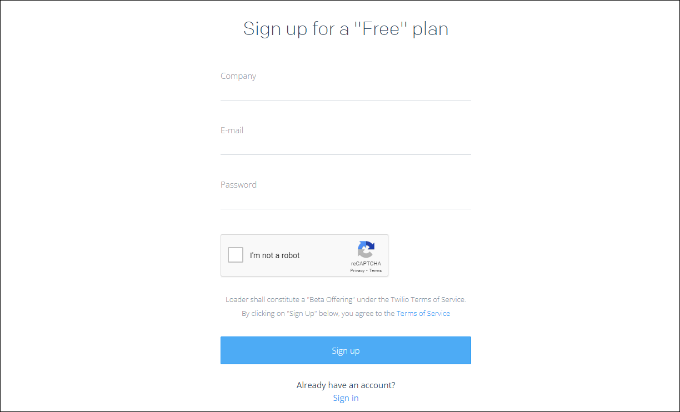
You also receive a verification email. Simply check your inbox and click the link in the email to verify your account.
Adding a New Host to Loader.io
After that, you can set up a target host by clicking the ‘+ New Host’ button.
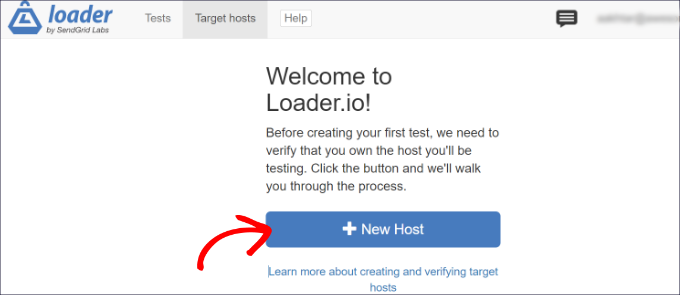
Next, you’ll need to enter your domain name.
Once that’s done, simply click the ‘Next: Verify’ button.
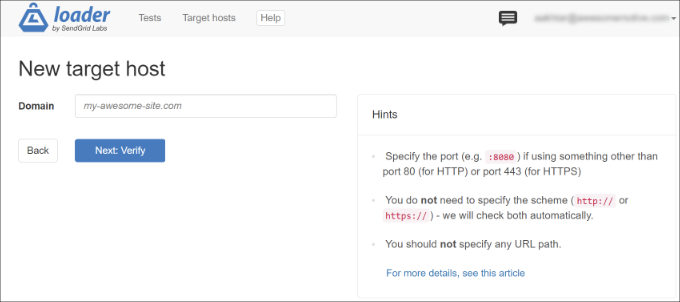
Next, you will need to verify your domain. You can do this by verifying over HTTP or DNS.
For this tutorial, we will use the ‘Verify over HTTP’ option and download the verification file. Go ahead and click the ‘download’ link and save the file on your computer.
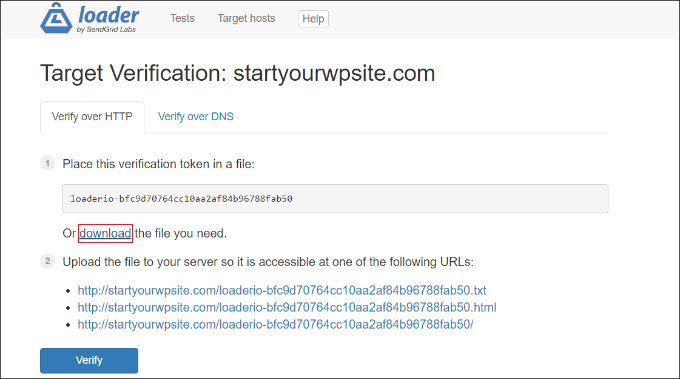
After downloading the file, you’ll need to upload it to your site’s root folder. This is usually called the public_html folder.
To upload the file, you can use an FTP client. For more details, please see our guide on how to use FTP to upload files to WordPress.
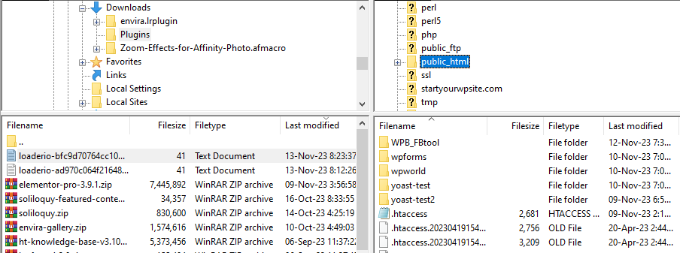
After uploading the file, you can return to the Loader.io website and click the ‘Verify’ button.
Upon verification, you should see a success message.
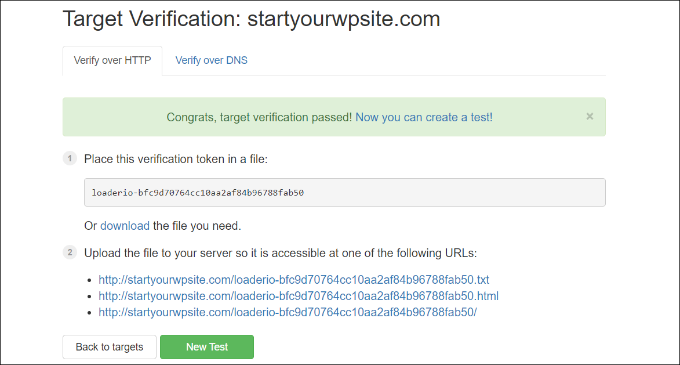
Next, you’ll need to click the ‘New Test’ button and set up a stress test for your website.
Configuring Your Stress Test Settings
On the next screen, you can change the settings for your stress test. You can start by adding a name for your test.
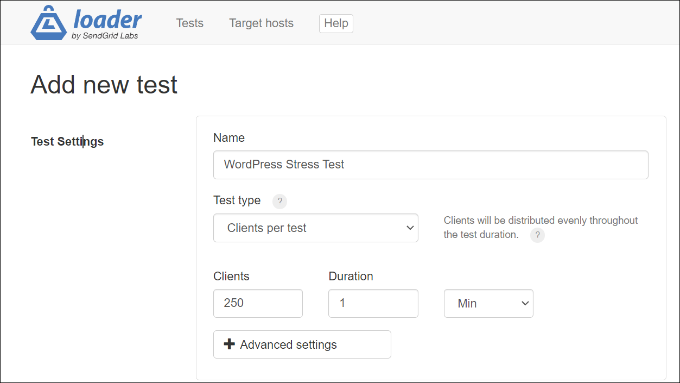
After that, you’ll need to select the test type. Loader.io offers 3 test types, which include:
- Clients per test – In this, you can test how your site will work when a specific number of visitors visit your site for a specified amount of time. You can set the number of clients and the duration.
- Clients per second – This scenario will test your site for a specified number of client requests per second.
- Maintain client load – Under this test type, a constant client count is maintained throughout the duration of the test. It stress tests your site when there is a constant load for a specific time.
We recommend running multiple tests using each of these types. This will help uncover any issues that your site might encounter under different scenarios.
If you scroll down, then you’ll see Client Requests settings. For general testing, we recommend using the default settings, and you don’t need to change anything.

Now, you are ready to stress test your WordPress site. Go ahead and click the ‘Run test’ button.
Analyze Your Stress Test Results
Loader.io will run the stress test for your website and compile the results. You can then analyze them to see how your site performs under high-traffic situations.
For instance, you can start by looking at the average response time. The lower the response time, the faster your website’s loading speed.
In our testing, the average response time was 590 milliseconds or 0.59 seconds when 250 clients visited the site for 1 minute.

This is fairly decent reading and shows that the website didn’t slow down considerably under high load.
However, the maximum response time recorded was 10489 ms or 10.489 seconds. You can now look at the graph below to see when the response time jumps compared to the number of clients.
For instance, our testing showed a spike when the number of clients exceeded 150, and the maximum response time was seen when the number of clients almost reached 200.
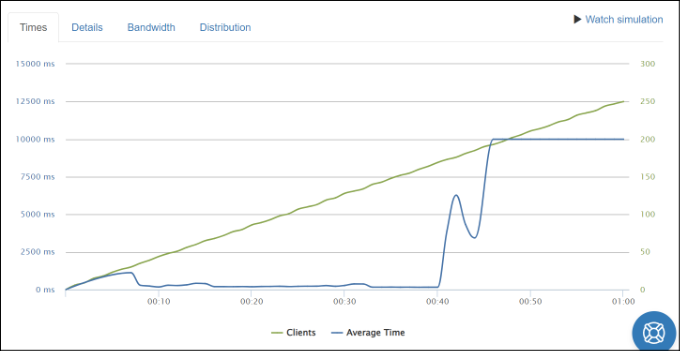
Using these insights, you will have a rough idea of how your site will perform when a certain number of people visit it.
You can now repeat this step and run multiple tests using different scenarios. For instance, try increasing the number of clients, testing the duration, and using different test types.
Tips to Improve Response Time & Boost Performance
If WordPress load tests show slow performance under high-traffic situations, then you can try different things to speed up your site.
Here are some tips for improving response time and handling high traffic load:
1. Upgrade Your WordPress Hosting Plan – If you are using a hosting plan that has limits on the number of visitors per month, then consider upgrading to a higher hosting plan. This way, you’ll get more server resources, and your site can handle extra traffic when there is a spike. You can also see our detailed comparison of the fastest WordPress hosting services to learn more.
2. Use a Caching Plugin – A caching plugin reduces the load on your site’s server and helps improve performance. It serves a static version of the site to users instead of going through the entire process of requesting a webpage. As a result, your site loads faster, and you provide a better user experience.
3. Set Up a Content Delivery Network (CDN) – A CDN is a network of servers that deliver cached static content to users based on their location. It helps lower the load on your site server and improve the response time.
4. Optimize Your Images and Videos – Unoptimized images can lead to performance issues on your site and increase load on the server. To start, you can compress large image files to lower response time. If you are hosting videos on your site, then consider uploading them to YouTube or Vimeo and embedding them in your content.
5. Remove Unused Plugins and Themes – If you have WordPress plugins and themes that are not in use or are resource-heavy, then consider removing them. They can slow down your WordPress site by loading unused scripts and utilizing a lot of server resources.
6. Hire a WordPress Support Service – You can also hire WordPress experts to optimize your site for speed. They will stress test and check different elements on your site to boost page load speed. For example, with WPBeginner Site Speed Optimization Service, our experts will overhaul your site to improve load time.
For more tips on improving your site’s performance, please see our guide to boost WordPress speed and performance.
FAQs About Stress Testing a WordPress Website
We understand you might have a few more questions about this process. To help you feel even more confident, we’ve answered some of the most common questions we hear about stress testing a WordPress site.
1. What is the difference between a stress test and a speed test?
A website speed test measures how fast a page loads for a single visitor under normal conditions. A stress test is different because it simulates what happens when many visitors access your website all at once. It’s designed to see how your site performs under the pressure of high traffic, helping you prepare for successful marketing campaigns or viral posts.
2. Will running a stress test crash my live website?
There is a small chance that an intense test could slow down your site or make it temporarily unavailable. This is why we recommend running tests during your site’s off-peak hours when traffic is at its lowest. The benefit is discovering your site’s breaking point in a controlled manner, allowing you to fix any issues before they affect real visitors.
3. How many users should I test for?
A great starting point is to check your website analytics to find your current peak traffic. For your first test, try simulating 2 to 3 times that number of users. For instance, if your busiest hour typically has 50 users on your site at once, you could start by testing for 100-150 clients. You can then run more tests, gradually increasing the number to find your site’s limits.
4. How often should I stress test my website?
You don’t need to perform a stress test every day. It’s best to do it before a major event, such as a product launch, a big sale, or when you anticipate a piece of content might go viral. It’s also a good idea to test after making significant changes to your site, like switching your hosting plan, changing themes, or adding a major new plugin.
5. What should I do if my website performs poorly on a stress test?
A poor result is actually very useful information because it gives you a clear action plan. It shows you exactly where you can make improvements to handle more success. We have provided several tips in the section above, including upgrading your hosting, using a caching plugin, setting up a CDN, and optimizing your images.
We hope this article helped you learn how to stress test a WordPress website. You may also want to see our guide on how to prepare your WordPress site for a high-traffic event and our expert pick of the fastest WordPress hosting.
If you liked this article, then please subscribe to our YouTube Channel for WordPress video tutorials. You can also find us on Twitter and Facebook.


